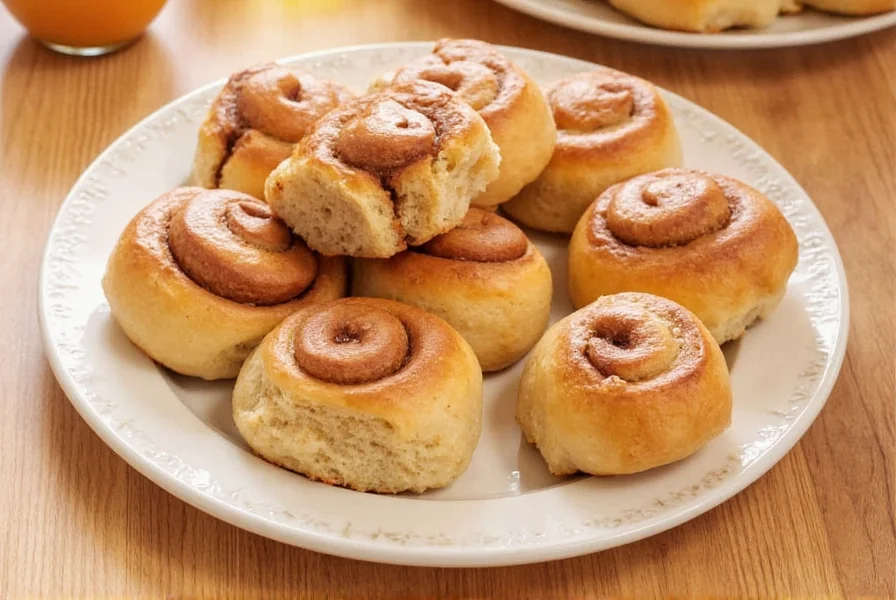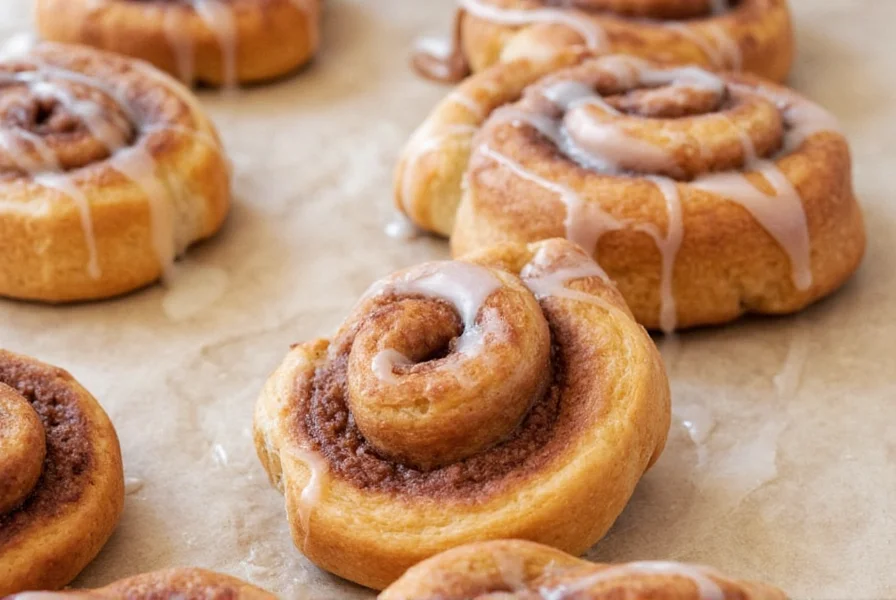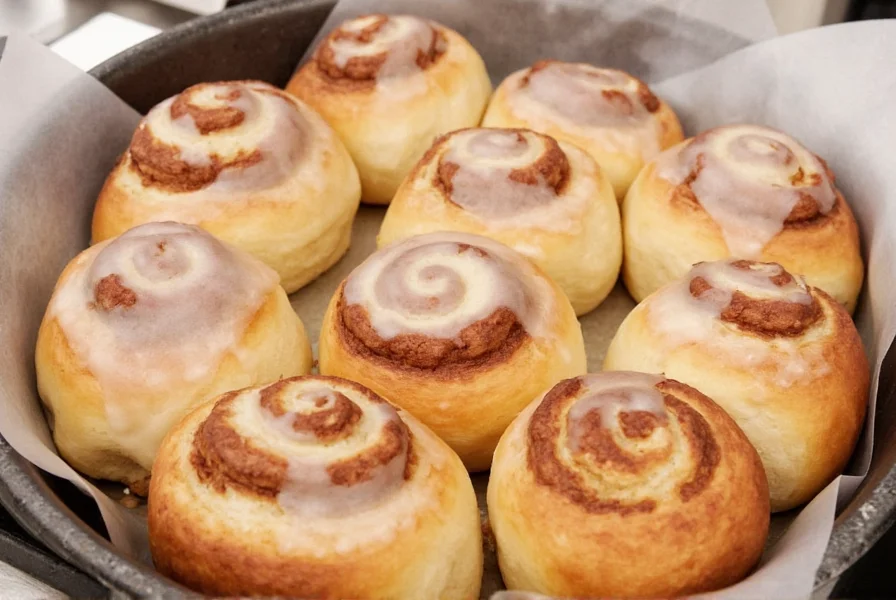When bakers and food enthusiasts describe cinnamon rolls as "legendary," they're referring to an exceptional balance of texture, flavor, and technique that elevates this classic pastry beyond ordinary versions. Legendary cinnamon rolls feature a perfectly proofed dough that's light yet substantial, a cinnamon-sugar filling with the ideal sweet-spice ratio, and a frosting that enhances rather than masks the roll's natural flavors.
What Defines Truly Legendary Cinnamon Rolls
The difference between good and legendary cinnamon rolls comes down to specific technical elements that most home bakers overlook. Professional pastry chefs emphasize three critical components:
- Dough development - Proper gluten formation through controlled kneading and resting
- Filling composition - Using high-quality cinnamon (preferably Ceylon) with precise sugar-to-spice ratios
- Temperature control - Managing proofing conditions to achieve optimal rise without compromising structure
According to baking science research published in the Journal of Cereal Science, the ideal cinnamon roll dough contains 60-65% hydration, allowing for proper steam generation during baking that creates those signature flaky layers. Many "legendary" recipes fail because they don't account for environmental factors like kitchen temperature and humidity, which dramatically affect dough behavior.
The Science Behind Perfect Cinnamon Rolls
Understanding the chemistry transforms your baking results. When making legendary cinnamon rolls, consider these scientific principles:
| Component | Scientific Principle | Practical Application |
|---|---|---|
| Dough | Gluten development through mechanical action and time | Allow 20-minute autolyse before kneading; use windowpane test to check readiness |
| Filling | Sugar melting point (320°F/160°C) | Use brown sugar for lower melting point and caramelization during baking |
| Frosting | Fat crystallization temperature | Cool rolls completely before applying cream cheese frosting to prevent melting |
Professional bakers note that the "legendary" texture comes from proper lamination during rolling. When you roll the dough, you're creating hundreds of thin layers separated by butter and filling. During baking, the water in the butter turns to steam, causing these layers to separate and create that sought-after flaky texture.

Step-by-Step Legendary Cinnamon Rolls Recipe
This tested recipe incorporates professional techniques while remaining accessible for home bakers. Yields 12 perfect cinnamon rolls.
Ingredients
- 3 1/4 cups (410g) bread flour
- 1/4 cup (50g) granulated sugar
- 2 1/4 tsp active dry yeast
- 1/2 cup (120ml) whole milk, warmed to 110°F (43°C)
- 1/3 cup (80ml) whole cream
- 1 large egg, room temperature
- 1/4 cup (57g) unsalted butter, melted
- 1/2 tsp salt
Filling
- 1/2 cup (113g) unsalted butter, softened
- 1 cup (200g) light brown sugar, packed
- 3 tbsp Ceylon cinnamon
- 1/4 tsp cardamom (optional but recommended)
Cream Cheese Frosting
- 4 oz (113g) full-fat cream cheese, room temperature
- 1/4 cup (57g) unsalted butter, room temperature
- 1 cup (120g) powdered sugar
- 1/2 tsp vanilla extract
- Pinch of salt
Method
- Dough preparation: Combine warm milk, cream, and 1 tbsp sugar. Sprinkle yeast over mixture and let sit 5-7 minutes until foamy. In stand mixer bowl, combine flour, remaining sugar, and salt. Add yeast mixture, egg, and melted butter. Mix with dough hook until smooth and elastic (about 8 minutes).
- First rise: Place dough in lightly oiled bowl, cover with damp cloth. Let rise at consistent 75°F (24°C) for 1-1.5 hours until doubled. Professional tip: Use a proofing box or oven with light on for consistent temperature.
- Rolling technique: Roll dough into 18x12 inch rectangle. Spread softened butter evenly, then sprinkle filling mixture. Roll tightly from long side, pinching seam to seal. Use dental floss to cut clean slices.
- Second proof: Place rolls in greased pan, cover, and proof at 80°F (27°C) for 45-60 minutes until nearly doubled. This temperature-controlled second proof makes legendary cinnamon rolls rise perfectly without collapsing.
- Baking: Bake at 350°F (177°C) for 22-25 minutes until golden brown. Cool completely before frosting.

Common Mistakes That Prevent Legendary Results
Even experienced bakers make these critical errors when attempting legendary cinnamon rolls:
- Incorrect yeast activation - Water temperature above 130°F (54°C) kills yeast, below 100°F (38°C) doesn't activate properly
- Rushing the proofing process - Insufficient rise leads to dense rolls; over-proofing causes collapse during baking
- Using low-quality cinnamon - Cassia cinnamon (common in supermarkets) is harsher than Ceylon cinnamon preferred by professionals
- Applying frosting too soon - Heat from warm rolls melts frosting, creating a soggy texture
Variations for Special Dietary Needs
Professional bakeries report increasing demand for dietary-specific legendary cinnamon rolls. Here's how to adapt the recipe:
- Gluten-free: Substitute with 300g gluten-free bread flour blend containing xanthan gum. Increase liquid by 15% and refrigerate dough overnight for better structure.
- Dairy-free: Replace milk with oat milk, butter with coconut oil (refined for neutral flavor), and cream cheese with vegan alternative. Add 1/4 tsp apple cider vinegar to dough for proper rise.
- Lower sugar: Reduce filling sugar by 25% and add 1 tbsp date paste for natural sweetness. Use monk fruit sweetener in frosting at 1:1 ratio.
Storage and Reheating for Perfect Results
Legendary cinnamon rolls maintain quality when stored properly. Research from the American Association of Baking shows that proper storage techniques can preserve freshness for up to 5 days:
- Room temperature: Store in airtight container with parchment between layers for up to 3 days
- Refrigerated: Wrap individually in plastic, then place in container for up to 1 week
- Freezing: Flash freeze rolls on baking sheet, then transfer to freezer bags for up to 3 months
For best reheating results, professional pastry chefs recommend:
- Cold rolls: Microwave 10-15 seconds at 50% power
- Frozen rolls: Thaw overnight in refrigerator, then warm in 300°F (149°C) oven for 8-10 minutes
- Reviving stale rolls: Lightly spritz with water and warm in 325°F (163°C) oven for 5 minutes
Conclusion
Creating truly legendary cinnamon rolls requires understanding both the art and science of baking. By focusing on precise ingredient ratios, controlled proofing environments, and proper technique, home bakers can achieve results that rival professional bakeries. The most legendary cinnamon rolls balance exceptional flavor with perfect texture—tender yet structured, sweet but not cloying, with that unmistakable cinnamon aroma that fills your kitchen. Remember that environmental factors significantly impact results, so adjust techniques based on your specific kitchen conditions for consistently legendary outcomes.
Frequently Asked Questions
What makes cinnamon rolls truly legendary compared to regular ones?
Legendary cinnamon rolls feature perfectly balanced sweet-spice filling, tender flaky dough with proper gluten development, and cream cheese frosting that complements without overwhelming. The difference lies in ingredient quality (particularly Ceylon cinnamon), precise temperature control during proofing, and professional techniques like proper lamination that create hundreds of thin layers.
Why do my homemade cinnamon rolls turn out dense instead of light and fluffy?
Dense cinnamon rolls typically result from improper proofing - either under-proofing (not allowing enough rise time) or over-proofing (letting the dough rise too long). The ideal proofing environment is a consistent 75-80°F (24-27°C). Other common causes include using too much flour during rolling, killing the yeast with water that's too hot, or not developing enough gluten during kneading.
Can I make legendary cinnamon rolls without a stand mixer?
Yes, you can make legendary cinnamon rolls without a stand mixer. Hand-kneading requires about 15-20 minutes of vigorous kneading until the dough passes the windowpane test (when stretched thin, it should be translucent without tearing). The key is developing sufficient gluten structure. Many professional bakers actually prefer hand-kneading as it allows better feel for the dough's texture development.
What's the secret to preventing cinnamon filling from leaking out during baking?
To prevent filling leakage, professional bakers use three techniques: 1) Spread softened butter first as a barrier before adding dry filling ingredients 2) Roll the dough tightly but without compressing it 3) Seal the edge properly by pinching the seam. Using brown sugar (which has lower melting point than granulated sugar) also helps as it caramelizes rather than liquefies completely during baking.
How can I make my cinnamon rolls more flavorful without adding more sugar?
Enhance flavor without extra sugar by using high-quality Ceylon cinnamon (softer, more complex flavor than common Cassia), adding a pinch of cardamom or nutmeg to the filling, using dark brown sugar instead of light, and incorporating a small amount of orange zest. Professional bakeries often add 1-2 tsp of bourbon or rum to the dough for depth of flavor without noticeable alcohol taste after baking.











 浙公网安备
33010002000092号
浙公网安备
33010002000092号 浙B2-20120091-4
浙B2-20120091-4